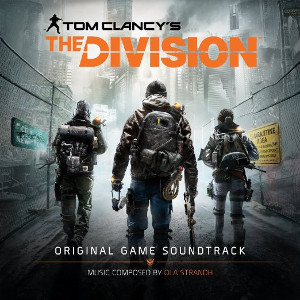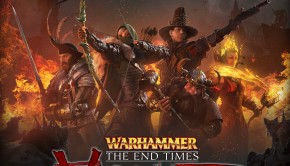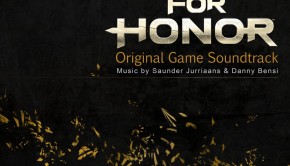The Division Original Game Soundtrack
 |
Album Title: The Division Original Game Soundtrack |
| Record Label: Ubisoft Music (Digital Edition); Sumthing Else Music Works (Physical Edition) |
|
| Catalog No.: N/A; SE-3161-2 |
|
| Release Date: March 8, 2016; March 22, 2016 |
|
| Purchase: Buy at Amazon |
Overview
What needs to be said about Tom Clancy’s The Division? Hyped, previewed, delayed, hyped, beta-tested, released to much fanfare, and hyped again, it has firmly established itself as the biggest release so far this year. And while the score by Ola Strandh, whose previous credits include the Ground Control series and World in Conflict, is unlikely to create the same sort of fervour, it’s an excellent soundtrack which deserves a listen.
Body
In a welcome departure from many current game scores, The Division heavily features retro synth sounds evoking pioneers such as Jean-Michel Jarre, Vangelis, and Klaus Schulze. I was frequently reminded also of Daft Punk’s excellent Tron: Legacy soundtrack, and Brad Fiedel’s scoring for the Terminator films. This is no IDM imitation of 80s action film scoring either, but authentic, frequently brooding, synthwave with orchestral elements. There’s no 4/4 kicks or breakbeats here.
Opening with brassy synth swells and a pulsing bass line, “Prologue” is straight out of Vangelis’ playbook – before becoming smoother and gentler as it segues into “We are the Division”. Picking up where the prologue left off, brassy synth sequences reminiscent of Jarre’s Equinoxe Part IV underpin what is an otherwise surprisingly gentle track, rather than a strong statement of purpose. The score starts to pick up with “Precinct Siege”: the brassy sequences returning with orchestral percussion and string ostinati, the combination of which with a langorous theme begins to recall Fiedel. The track rarely sits still though, shifting to a more ambient sound before picking itself back up and straight into Vangelis territory with spacious brassy swells before being swamped by busy percussion and synth sequences. This indeed becomes the formula for much of the score: restless shifting between tonal and rhythmic elements in a mobile form.
There is at least a little variation between the remaining ‘action’ cues. Slow, swelling bass and pads lend Mortuary the dark and sinister tone of modern synthwave cyberpunk. “Amherst”’s bleak, detuned build to the expected heavy percussion over synth pads soon gives way to something more akin to Blade Runner‘s more atmospheric cues. “Ferro” finds the score at its closest point to Tron: Legacy, with its driving sequences sustaining the high-point of energy for the score.
“Safehouse” offers something much gentler. Warm and safe, it befits its purpose. Sequences and pads float through reverb space, and in a different context this might indeed be considered space music. “The Garden” is also a notable exception to the rule, at least to begin with. There’s a more ambient and melancholy tone before the driving bass sequence kicks in — the music mellowing and building, its drive picking up definition more than energy. This cue is reprised later in “Power Plant”, marking the only memorable returning theme in the score. “Mall Rats” kicks off with beautiful swells over a busy arpeggiated synth (recalling Enya’s Aldebaran, of all things) before closing with a tantalising and plaintive scrap of melody. The Academy repeats this idea, after stripping away its heavy percussion to leave only synth sequences rolling along, pushing out a flicker of melody in its dying moments. The short cue “Skyline” rounds out the more melodic side of the score.
The other cues — “Dyer”, “Times Square”, “Grand Central”, “Lexington”, and “Bliss” — are content to stick to the formula. Jarre-esque synth sequences, washes of pads, bursts of percussion and string ostinati, occasional segues to dark ambient moments all mixed and matched together in mobile form that rarely stays still for long. “Dark Zone” ends the score very much in-formula, with no great sense of closure.
Summary
It may sound dismissive to lump the tracks together in this way, but they really are that homogenous. For better or worse, defined by The Division’s clear sense of musical identity. This is not Power Glove’s slightly tongue-in-cheek score for Far Cry: Blood Dragon – as much pastiche as it is homage to its 80s action inspirations – but something altogether more earnest. If there is one criticism that can be levelled at this soundtrack, it’s that it deals more in sounds and textures than memorable themes – or even strong motifs. This is not a soundtrack you’ll find yourself humming because a melody has become stuck in your head. It does at least stand up well as a listening experience independent of the game, despite its homogenous sound. Despite its action scoring origins and bursts of percussion, it makes surprisingly good background music as well. The 78-minute soundtrack can be picked up in digital format (included in lossy format) and, for all the collector’s out there, a newly-released CD.
Do you agree with the review and score? Let us know in the comments below!
3.5
Posted on April 1, 2016 by Isaac Bridle. Last modified on April 1, 2016.














